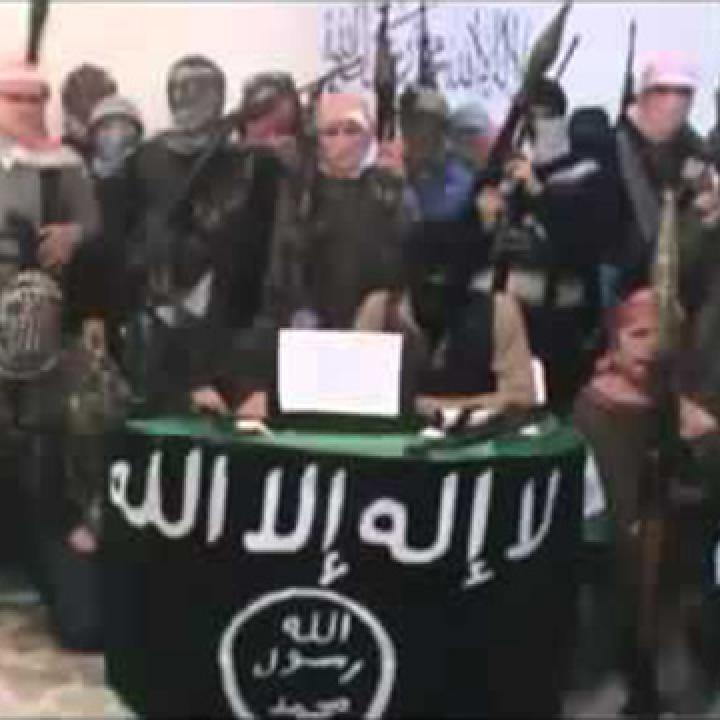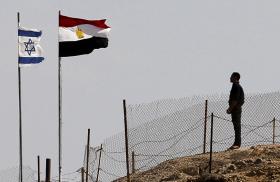

If history is any guide, the networks of fighters forged by the Syrian war will not remain silent in the coming years.
For jihadists, the Syrian war recalls Afghanistan in the 1980s and 1990s for various reasons. Perhaps most notably, in both conflicts groups traveled from other battlefields to fight and train for future jihad upon returning home. This comparison truly signals Syria's emergence as the epicenter of the global jihadist movement, even if more attention has rightly been given in recent weeks to Iraq. Just as events in Afghanistan spawned many later insurgencies and terrorist attacks, many future threats will now likely emanate from or have a connection back to Syria.
Legacy of the "Afghan Arabs"
During the latter years of the anti-Soviet jihad in the 1980s and, later, the fight against the Afghan puppet communist regime and the Taliban's rise in the 1990s, individuals from jihadist national groups and, in some cases, the groups themselves traveled to Afghanistan to set up camp, train, and acquire new skills. Most often, these groups used the Afghan safe haven to escape harassment within their home countries. The groups also used Afghanistan as a planning site for insurgencies and terrorist attacks at home, with some such endeavors receiving seed money from al-Qaeda's Usama bin Laden. Unlike the national jihadist groups, al-Qaeda focused on providing training for foreign-fighter insurgencies in central Asia, the Caucasus, and the Balkans. Al-Qaeda was also involved in planning terrorist attacks against Western targets, interests, or the states themselves.
Beyond the known cases of al-Qaeda terrorist attacks, national jihadist groups that graduated from Afghanistan include the Libyan Islamic Fighting Group, Algerian Armed Islamic Group, and Egyptian al-Gamaa al-Islamiyah. All were involved in multiyear insurgencies in the early- to mid-1990s that killed many innocents. Other low-level insurgencies or terrorist attacks played out in Tunisia with the Tunisian Combat Group, in Morocco with the Moroccan Islamic Combat Group, in Uzbekistan with the Islamic Movement of Uzbekistan (IMU), in China with the East Turkestan Islamic Movement, in Indonesia with Jemaah Islamiyah, and in Yemen with the Aden-Abyan Islamic Army. Whereas many of these groups evoke the past, Syria is producing its own new generation of national jihadist groups, in addition to the global leaders, the Islamic State of Iraq and al-Sham (ISIS) -- now the Islamic State (IS) -- and Jabhat al-Nusra (JN).
The New Generation in Syria
Within this new generation, two main types of groups can be identified: the first, known branches of jihadist organizations or their operatives who are using Syria as a base for fomenting insurgency or terrorism back home or in third-country locales; the second, independent foreign-fighter battalions usually composed heavily of one nationality. Although these latter groups are independent, some operate or are more closely aligned with either IS or JN.
Among the known jihadist organizations operating in Syria, the most overt is the East Turkestan Islamic Party, a majority Uyghur group based in Xinjiang, China, and Pakistan; the group has recently appended "in Bilad al-Sham" to its name for those training in Syria. According to one of its leaders, Abu Rida al-Turkestani, the group has been fighting in and using Syria as a base for training since 2012. Jaish al-Muhajireen wal-Ansar, meanwhile, a majority Caucasus/Chechen group, has also been operating in Syria since 2012, though it has only recently claimed overtly to be a branch of the Caucasus Emirate (CE). The group, which has gone by various names, has since spring tagged itself the Caucasus Emirate in Bilad al-Sham, making Syria the second forward operating base after its Afghanistan base in recent years.
Among individuals seeking to exploit the situation in Syria are many associated with al-Qaeda and its branches. For example, al-Qaeda has sent people from its Afghanistan base to provide guidance and training for both in- and out-of-theater operations to JN, al-Qaeda's official Syrian branch. Abd al-Muhsin Abd Allah Ibrahim al-Sharikh -- a.k.a. Sanafi al-Nasr -- heads al-Qaeda's "victory committee" in Syria and is a top JN leader. According to the U.S. Treasury Department, al-Qaeda's former head of security for counterintelligence, Abu Wafa al-Saudi, is also in Syria, as is Abu Humam al-Suri, who heads JN's paramilitary forces. Likewise, the former head of al-Qaeda's Iranian facilitation network, Muhsin al-Fadhli, and founding al-Qaeda member Abu Firas al-Suri are in Syria, as is Abu al-Hassan, a former fighter for al-Qaeda in Afghanistan and now a top Ahrar al-Sham leader. Operatives from al-Qaeda in the Arabian Peninsula (AQAP) have also made it to Syria, with rumors suggesting some have been charged with making next-generation explosives to sneak onto planes, echoing past AQAP plots.
Alongside the known organizations and individuals present in Syria, one finds a number of upstart jihadist groups and cells that are nationally represented or dominated. The largest among them is the Moroccan battalion Harakat Sham al-Islam, which has taken the lead in offensives in Latakia and elsewhere. Two Saudi groups, Katibat Suqur al-Izz and Katibat al-Khadra, have also operated in Syria, though this year both seem to have lost funding and members to JN and IS, after having operated more visibly in the last six months of 2013. Fighting mainly on the Syria-Lebanon border, particularly in the Homs region, is the Lebanese-dominated Jamaat Jund al-Sham, which was one of the earliest foreign-fighter entrants to the Syrian conflict, in part because of its location next door. The Libyans are represented with Katibat al-Battar al-Libiyah, which has ties with Ansar al-Sharia back in Libya. And on a much smaller scale than the rest is the Egyptian Usud al-Khilafa.
Outside the Arab world, Katibat Imam al-Bukhari has become the go-to group for foreign fighters from Uzbekistan -- still uncertain is whether this group has ties to IMU. In terms of Western sources, when Swedish jihadists first arrived in Syria they organized under the banner of a group called Majlis Shura al-Mujahedin. More recently, British nationals have created the Rayat al-Tawheed battalion. In the past few weeks, one of its fighters faked his death, only to be arrested upon his return to Britain. Dutch and Flemish fighters have organized around the informal networks of De Basis and Shaam al-Malaahim, while French fighters have created the Firqat al-Ghuraba battalion, which itself is part of JN.
Conclusion
While most observers recognize IS or JN, less known is the wider range of Sunni jihadist organizations, individuals, and out-of-the-box groups operating in Syria. Indeed, not all foreign fighters will end up becoming involved in insurgency or terrorism when they return home. Some may even stay in Syria. Also unclear is the extent to which, if any, this past weekend's declaration of a caliphate by the Islamic State in parts of Syria and Iraq will affect IS's appeal for lower-profile jihadists.
Recognizing the threat, governments, including the U.S. government, have already taken steps to deter and prevent conflagrations associated with foreign-fighter returns, including making a number of arrests over the past half year in the West, Arab states, and farther afield. Yet in other cases, terrorist attacks have already actually been carried out by returnees in Belgium, Egypt/Sinai, Libya, Tunisia, and Turkey. When it comes to foreign-fighter returnees coming from Syria, the present stage is only the end of the beginning. If history is any guide, the new networks of fighters forged by a shared experience in Syria will not remain silent in the years ahead. This is the case especially for the many who aim to create zones of influence, or Islamic states, in their home countries.
Aaron Y. Zelin is the Richard Borow Fellow at the Washington Institute.



